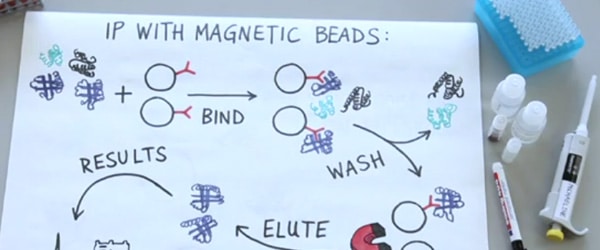You may have heard about a breakthrough cancer therapy that engineers patient’s immune cells to fight their cancer using chimeric antigen receptor (CAR)-T cells. If you don’t live in the world of immunology, you may not know what a CAR is, or what it is used for. Here you’ll find a brief guide to CARs, including their history, components, and potential for therapeutic use.
What Are Chimeric Antigen Receptors (CARs)?
CARs are cell-surface receptors that recognize specific proteins (antigens), which are made up of parts of other receptors (chimeric). In our immune system, our B and T cells have surface receptors called B cell receptors (BCRs) and T cell receptors (TCRs), respectively. These receptors recognize specific proteins that are associated with a disease or infectious agent. Both receptors have specific advantages and disadvantages.
TCRs cannot recognize antigens without the assistance of other cells called antigen-presenting cells. A TCR can however signal its T cell to directly kill the cell it finds, as well as signal to recruit additional cells. BCRs on the other hand can recognize antigens without any assistance. However, signals from the BCR can only be used to recruit other cells, and not directly kill the target.
CARs encompass portions of multiple immune receptors in order to engineer a receptor that can both recognize antigens without any help (like a BCR), and then directly kill the recognized cell (like a TCR).
CAR Components
CARs are made up of two major domains: the ectodomain and the endodomain. The ectodomain, which sits on the outside of the cell, interacts with the environment. The endodomain, which lies inside the cell, relays signals from the outside of the cell to the inside.
The Ectodomain
The ectodomain is commonly a fragment of a BCR that is known to recognize a specific antigen. For example, one CAR being used in clinical trials contains a portion of a BCR that is known to recognize CD19. This fragment can be changed to generate a CAR that recognizes any antigen that has a known BCR.
The Endodomain
The endodomain consists of portions of signaling molecules that are important for activation of T cells. This domain has evolved considerably since the introduction of CARs. The first generation of CARs contained a portion of a molecule called CD3 that is responsible for signaling that the receptor has been bound from the outside.
Second generation CARs included a portion of another protein, CD28, which is a costimulatory molecule that enhances the signal from the receptor. As research on CARs and their components continued, the endodomain underwent further refinement.
Third generation CARs currently contain additional signaling domains that enhance the signal and/or survival of T cells.
Uses, Benefits, and Future Directions of CARs
Hopefully you can appreciate the benefits you gain by engineering a CAR: you can use any BCR to any known antigen, and use it to activate a T cell to kill that target. This is the approach that multiple companies are currently exploring in the race to combat cancer with CARs. First, isolate T cells from a patient, engineer the patient’s T cells with a CAR specific to their cancer, then expand these cells and reintroduce them into the patient.
Currently, there are CARs for over 30 distinct antigens in clinical or pre-clinical trials. These CARs have the potential to target a huge number of cancers including leukemia, lymphoma, glioblastoma, and breast cancer.
CAR-T cell therapy against CD19 was recently approved in the United States for the treatment of B cell cancers. However, work is still ongoing to fine-tune the engineered CARs. Just as third-generation CARs built on second-generation CARs, future development of “fourth-generation” CARs will likely contain further refinements of the endodomain to improve on CAR signaling. The next generation of CARs may also include an encoded “suicide gene” that, when activated, will clear all the CAR-T cells in a patient. This would enable clinicians to end the treatment if significant side effects are observed, or if the cancer has been cleared.
By utilizing components of multiple immune receptors, CARs can harness the specificity of B cells and pair it with the potency of T cells to target and clear antigens of interest. Within the past year, two companies gained FDA approval for CAR-T cell therapies for the treatment of leukemia and lymphoma. With further study and better understanding of cancer-specific antigens, Chimeric Antigen Receptors are set to be one of the biggest advances in cancer treatment in our lifetime.
Further Reading and Resources
- Zhang C, Liu J, Zhong JF, Zhang X (2017). Engineering CAR-T cells. Biomarker Research. Jun 24;5(22).
- Perales MA, Kebriaei P, Kean LS, Sadelain M (2018). Building a Safer and Faster CAR: Seatbelts, Airbags, and CRISPR. Biol Blood Marrow Transplant. Jan:24(1):27–31.
- Riviere I, Sadelain M (2017). Chimeric Antigen Receptors: A Cell and Gene Therapy Perspective. Molecular Therapy. May 3;25(5):1117–24.






